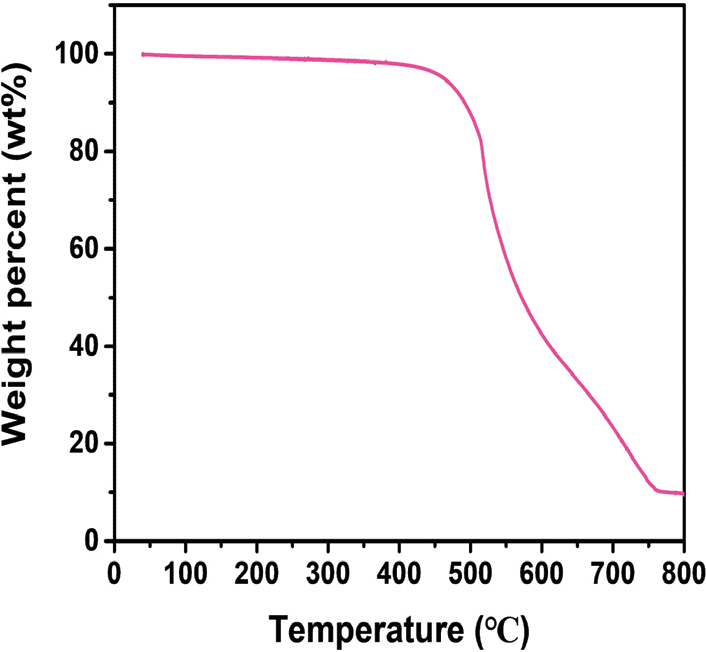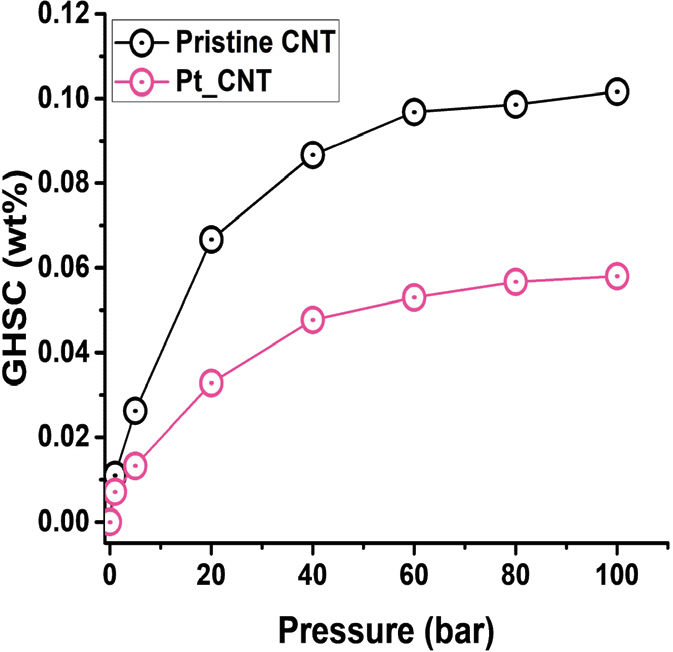수소저장소재 분야 내 스필오버 메커니즘의 타당성
The feasibility of a spillover mechanism in the field of hydrogen storage material
Article information
Trans Abstract
Hydrogen storage is required to make a breakthrough to commercializing hydrogen energy; however, the development of hydrogen storage material based on both physisorption and chemisorption faced their limit. To this end, researchers pay attention to applying the spillover mechanism to hydrogen storage, and a lot of research report the positive effect of the introduction of Pt to dissociate hydrogen molecule into porous material on hydrogen storage performance. Moreover, the mechanism of migration and adsorption of dissociated hydrogen from Pt is suggested, which is so-called spillover mechanism. However, some researchers raise doubt about the feasibility of the spillover mechanism in hydrogen storage. In this paper, we verify the effect of the introduction of Pt on hydrogen storage performance and discuss its feasibility.
1. 서론
수소 에너지는 이산화탄소를 불가피하게 배출하여 지구 온난화를 야기하는 화석연료를 대체할 에너지원으로 각광받고 있다. 실제로 수소는 142 MJ/kg의 높은 고에너지 밀도를 가지고 있고 우주상 가장 풍부한 원소이며 에너지를 얻는 과정에서 유해한 부산물을 배출하지 않는 이점을 지니고 있다.[1] 운송 분야에서 수소에너지가 실용적이기 위해서는 상온, 상압과 같은 일상 조건 내에서 충분한 양의 수소가 저장과 방출이 가능해야 한다.
수소를 저장하기 위한 종래의 방법으로는 고압 (350-700 bar) 탱크에 저장과 극저온 온도 조건 (20 K)에서 액화 저장을 들 수 있다. 하지만 전자의 경우 안정성에 관하여, 후자의 경우 boil-off에 관한 issue 때문에 수소저장시스템 대체가 절실한 상황이다.[2] 이를 해결하기 위해 연구진들은 물리흡착과 화학흡착을 이용한 수소저장소재 개발에 힘써왔었다.[3] 화학흡착의 경우 저장재와 수소 분자 간 결합력이 강한 메커니즘이기 때문에 높은 수소저장성능을 보유하는 소재가 많이 보고됨에도 poor kinetics, irreversibility, the generation of byproduct와 requirement of high thermal energy to store/emit hydrogen의 단점 때문에 실용화가 쉽지 않아 보인다. 반면 상온에서 구동이 가능하고 빠른 충방전과 우수한 가역성이라는 장점을 가진 물리흡착은 저장재와 수소 분자 간 결합력이 약해 낮은 저장성능을 보인다는 치명적인 단점을 가지는 메커니즘이다. 수소저장성능을 늘리기 위해 다공성 소재의 비표면을 늘리려는 노력들을 기울였지만 기술적 한계에 봉착한 상황이다.[4] 이를 해결하기 위한 여러 노력 중 수소를 분해하는 백금을 다공성 소재에 도입하면 수소저장성능을 높일 수 있다고 주장하는 수소저장소재에 관한 연구들이 보고되어 왔고 이른바 spillover mechanism에 의한 것이라고 주장되어왔다.[5–10] Spillover mechanism은 백금에 의하여 분해된 수소 원자를 이용하여 산화된 물질을 수소로 환원시키는 화학 반응으로, 본래 촉매 분야에서 활발히 연구되던 분야이다.[11,12] 백금을 비표면적이 넓은 지지체에 도입함으로써 백금에 의하여 분해된 수소 원자들이 지지체에 저장이 되고 다시 가역적으로 수소 분자로 재결합하여 떨어져 나오게 되어 수소 충/방전이 가능하다는 주장이 나오게 되었다.[8,9,13,14] 해당 연구의 선두주자인 Ralph group 은 IRMOF-1을 Pt-embedded activated carbon 과 혼합함으로써 상온 100 기압 조건 하 0.5 wt%라는 IRMOF-1의 수소저장성능을 4 wt%까지 증가시킬 뿐만 아니라 가역적인 성능을 보고한 바 있다14. 하지만 결과들에 대한 납득할만한 메커니즘이 제시되지 못 했고 해당 연구들의 타당성에 대한 의문이 일각에서 제기되고 있는 실정이다.[15,16] 이 논문에서는 탄소나노소재의 대표 주자인 carbon nanotube (CNT)에 platinum nanoparticle (NP)을 도입하여 수소저장성능 증대효과가 있는지 확인하고 수소저장소재 분야 내 스필오버 메커니즘의 타당성에 대해 논의하고자 한다.
2. 본론
주장된 바에 의하면 Spillover mechanism을 수소저장에 이용하기 위해서는 수소 분자를 수소 원자로 분해하는 촉매 역할을 할 백금과 분해된 수소 원자를 저장할 지지체가 필수적이다.[17] 쉽게 구할 수 있는 CNT 를 지지체로 선정하고, metal precursor으로부터 alcohol solution에서 열처리만으로 metal NP를 제작할 수 있는 polyol method[18]를 이용하여 Pt NP가 도입된 Pt_CNT를 합성하였다. 합성 전후의 소재에 대하여 XRD pattern을 분석해본 결과(Fig. 1), Pt_CNT에서 Pt NP의 결정성이 확인되었고 소재 내 Pt NP가 도입되었음을 확인하였다. 또한 Pt NP를 도입하기 위해 Polyol method를 거친 Pt_CNT가 기존의 cylindrical morphology를 유지하고 있음을 SEM image(Fig. 2)를 통해 확인하였다. 도입된 Pt NP의 weight percent 를 조사하기 위해 O2 분위기에서 thermal gravimetric analysis (TGA)를 한 결과, 산소와 결합하여 제거된 탄소를 제외한 Pt NP가 9.5 wt%를 차지하고 있었음을 확인하였다.

SEM image of pristine CNT (A) and Pt_CNT (B). No change in morphology after introduction of Pt nanoparticle in CNT
백금 도입에 의한 수소저장성능 증대 효과를 검증하기 위하여 Pt NP 도입 전후 소재의 비표면적과 상온, 100 기압 조건 하 gravimetric hydrogen storage capacity (GHSC)을 측정하였다. 그 결과, pristine CNT와 Pt_CNT는 각각 144 m2/g와 124 m2/g라는 비표면적을 가지고, 각각 0.10 wt%와 0.06 wt%라는 수소저장성능을(Fig. 4) 보임을 확인하였다. 이는 비표면적 감소에 따른 수소저장성능의 감소 현상이기 때문에 단순한 물리흡착에 의한 것이고, 일부 연구진들이 주장하는 촉매 효과로 인한 Pt NP에 의하여 분해된 수소 원자들이 저장되는 효과는 미미함을 보여주는 결과이다. 뿐만 아니라 분해된 수소 원자는 화학적으로 반응성이 커서 C-H bond를 이루기 때문에[19] 가역성까지 보고한 결과들에 대해서는 더욱 논의가 필요해 보인다. 따라서 백금 도입으로 수소저장성능 증대 효과를 보고하고 이를 이른바 spillover mechanism에 의한 것이라고 주장한 연구들은 재고되어져야 하며 유의해서 주장과 결과물들을 참고해야 한다.
3. 결론
지구의 기후 위기에 대항하기 위해 재생 에너지의 필요성이 대두되고 있는 상황에서 최근 수소에너지는 뜨거운 관심을 받고 있다. 하지만 수소에너지를 상용화하기 위해선 운송 분야에 사용되는 기술의 한계점을 극복해야 하는데 물리흡착과 화학흡착이라는 메커니즘을 이용한 수소저장소재 개발이 그 대안으로 제시되었다. 각각의 메커니즘은 태생적인 한계점이 있는데 이를 해결하려는 노력 중 Pt-embedded porous material을 이용한 고성능 수소저장 결과들이 주목받게 되었고 촉매계에서 연구된 spillover mechanism이 그 결과들의 메커니즘으로 주장되었다. 하지만 본 연구에서는 다공성 소재 내 Pt 도입의 수소저장능 증대 효과를 확인하기 위하여 Pt-embedded CNT를 합성하고 CNT의 비표면적과 상온 100기압 조건 하 수소저장능을 비교해보았다. 그 결과, Pt NP의 무게효과로 인해 낮은 비표면적 뿐만 아니라 Pt NP이 도입된 소재에서 오히려 성능이 낮아짐을 확인하였다. 비표면적 감소에 따른 수소저장성능 감소는 본 소재들의 주된 수소저장 메커니즘은 물리흡착임을 알 수 있고, Pt NP에 의해 분해된 수소 원자들에 의한 C-H bond 형성이 수소저장능에 미치는 영향은 미미하다고 판단된다. 따라서 이미 보고된 spillover mechanism과 관련된 수소저장소재 연구들은 재고되어져야 하며 유의 깊게 참고해야 한다.
References
Biography

◉◉소 순 형
◉ 2015년 포항공과대학교 신소재공학과 학사
◉ 2018-2021년 서울대학교 에너지자원신기술 연구소 연구원
◉ 2023년 서울대학교 재료공학부 박사


